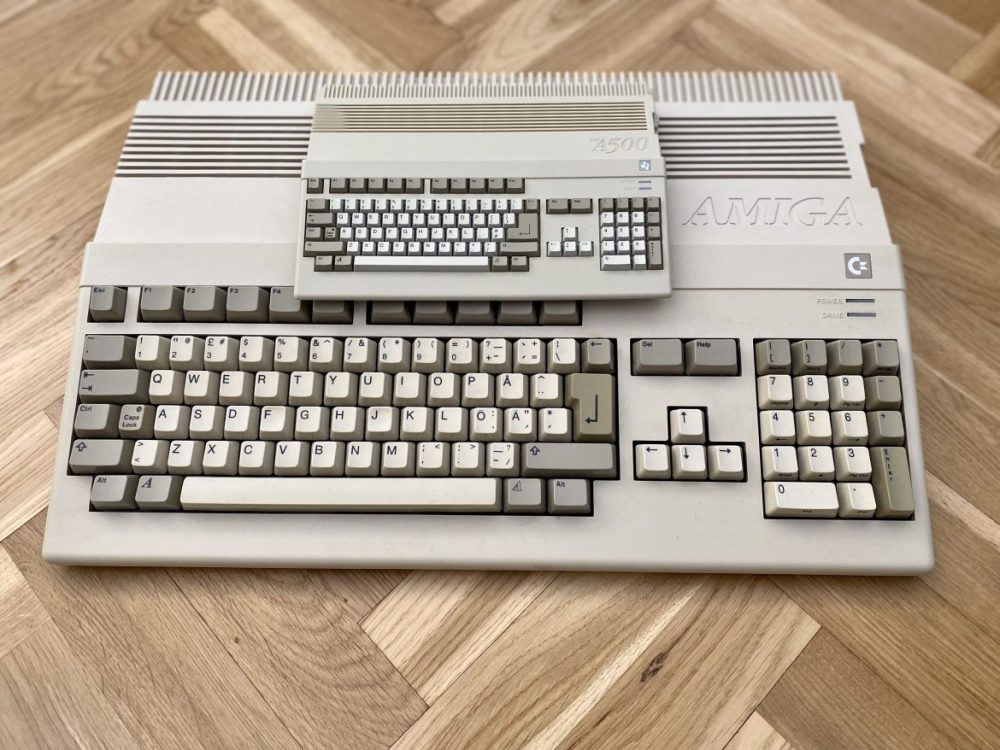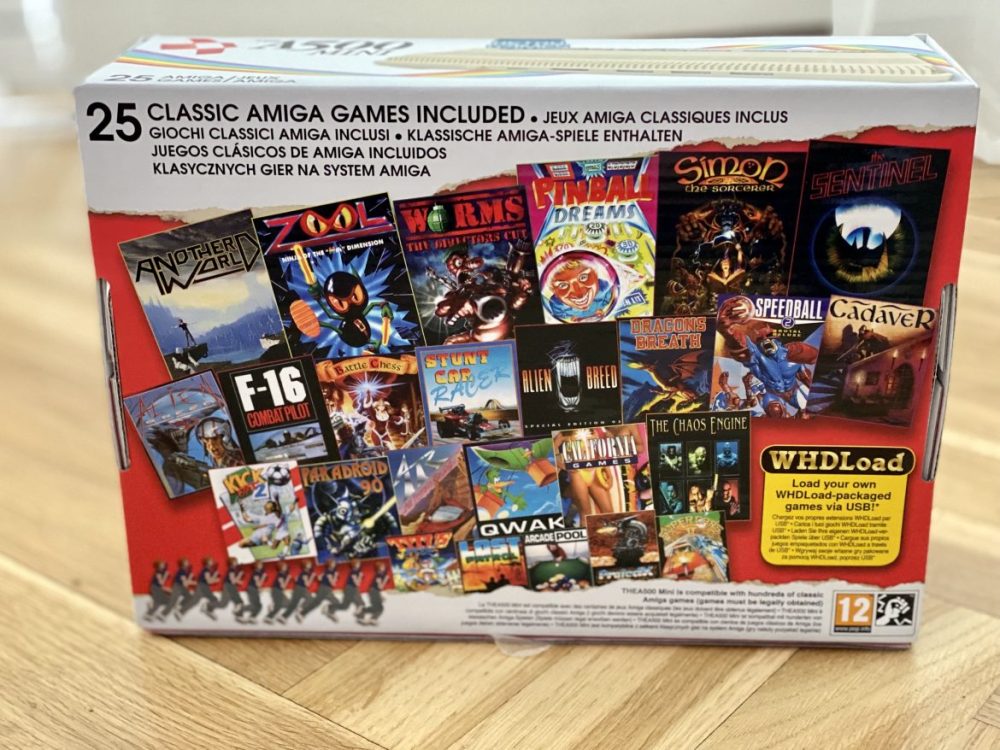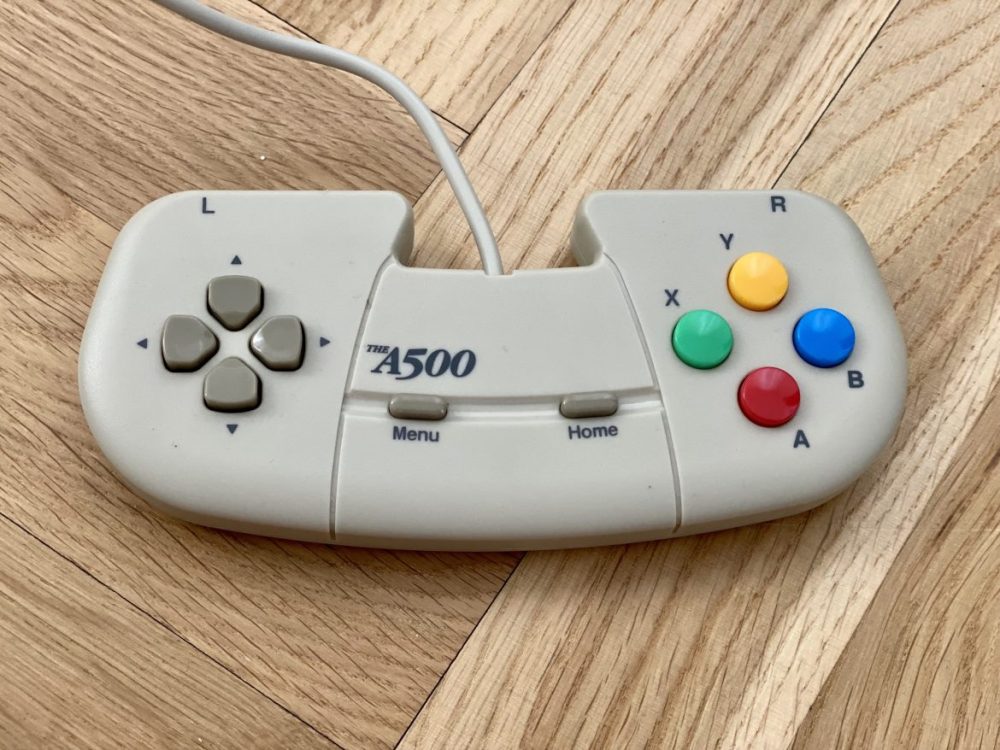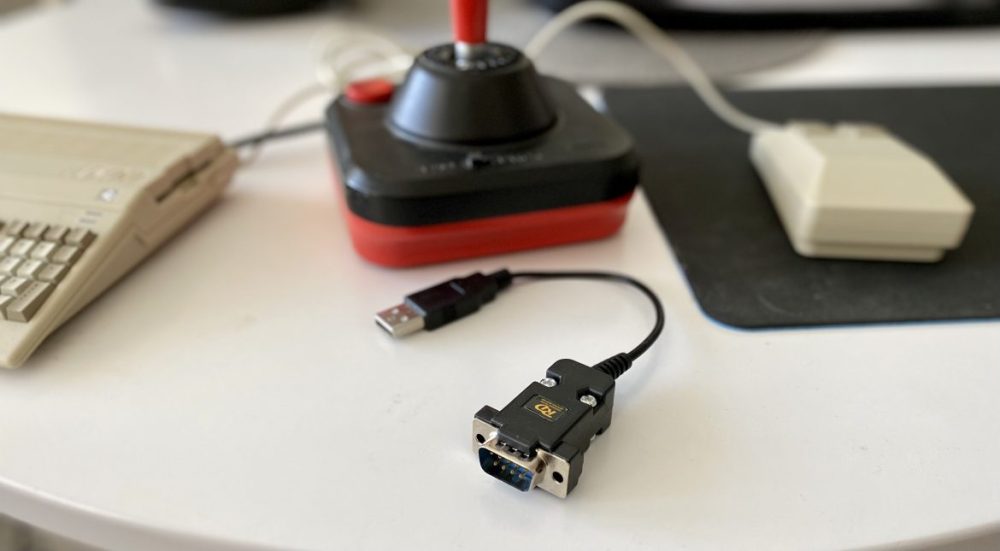TL;DR
Step back into the golden age of home computing with the A500 Mini, a retro console that lovingly recreates the iconic Amiga 500. While it lacks a keyboard and disk drive, it packs 25 classic games and offers excellent emulation, allowing you to relive titles like Speedball 2 and Another World with impressive speed and quality. Though the included CD32 controller isn't ideal for all games, and analog joystick support requires adapters, the A500 Mini provides a convenient and nostalgic gateway to Amiga gaming, making it a worthy upgrade over aging original hardware. Curious to see if this mini marvel lives up to the hype? Read on to find out!
Gaming is now ubiquitous, particularly on mobile platforms. However, it wasn’t long ago—roughly 40 to 50 years—that electronic gaming was in its nascent stages, far from widespread acceptance (often labeled as a niche interest!). In the 1980s, the Nintendo 8-bit (NES) dominated the console market. Home computers, primarily the Commodore 64/128, were emerging, though I never owned one personally. My sister and I occasionally rented the NES from the local kiosk—a familiar practice akin to renting a moviebox before the prevalence of personal VHS players. I experienced the Commodore 128 at a friend’s house. At the age of seven, I received an MSX Spectravideo 728 from my parents, a unique Japanese home computer notable for its capabilities and impressive cartridge games from Konami. Titles like Penguin Adventure and Maze of Galious (Knightmare 2)—nicknamed “Christian’s Zelda” by neighborhood friends—hold cherished memories. The late 80s and early 90s marked a significant technological leap with the arrival of the 16-bit era. While many aspired to own a Super Nintendo (SNES) or SEGA Mega Drive, I desired—and received—a Commodore Amiga 500. Despite my fondness for various gaming formats, the Amiga 500 holds a special place as a machine that elevated gaming experiences to unprecedented levels.
While the Atari 520/1040 ST(E) was a competitor, the Amiga 500, leveraging its specialized graphics and audio chips, firmly established itself as the premier gaming platform of its time. This golden age lasted approximately five years until the mid-90s when the PC largely supplanted the home computer market. Commodore subsequently faced decline and bankruptcy, mirroring the fate of its rival, Atari, which persists but lacks a clear strategy for its revival, indicated by infrequent console releases. Even now, Commodore’s legacy remains complex, including unresolved questions surrounding trademark ownership. Italian company Cloanto has long licensed Amiga’s operating system and KickStart-ROMs (similar to a BIOS), which it legally distributes with software and games for emulator enthusiasts. In collaboration with Retro Games, they are releasing the A500 Mini (note the subtle name difference from Amiga 500 Mini, due to the aforementioned trademark issues).

A500 Mini: A Compact Amiga Homage
The A500 Mini exhibits a compelling and aesthetically pleasing design, accurately replicating the Amiga 500’s form factor, albeit without a functional keyboard or disk drive. Keyboard input is managed via the MENU button on the included USB game controller, a scaled-down version of the classic CD32 controller. While this solution suffices for selecting pinball tables in Pinball Dreams, it is not ideal for extensive text input. The package also features a replica of the Amiga “tank” mouse, a robust two-button device updated with an optical reader replacing the original ball. An HDMI cable, a USB-C-to-USB-A power cable, and a quick start guide are included (a more detailed manual is available as a PDF on the website). As is typical, a USB power supply is not included. Users intending to use the A500 Mini with a television may want to consider acquiring longer HDMI and USB-C-to-USB-A cables. Displaying Amiga games at their native resolution on a large screen may not be optimal.

Premium Amiga Emulation
Amiga emulation has been prevalent for approximately 25 years, largely through PC applications like WinUAE. More recently, Linux-based emulators for the Raspberry Pi, such as Amiberry, have gained popularity. The Pi400, the latest iteration of the single-board computer, even features a dedicated software version for Amiga emulation (PiMiga, which we plan to evaluate in the future). Retro Games’ mini-console employs an SoC (System on a Chip) architecture, utilizing a customized version of Amiberry, a proprietary graphical interface, and 25 pre-installed games. These include classics such as Speedball 2, Simon the Sorcerer, Another World, Battle Chess, and Alien Breed, along with lesser-known titles like Paradroid, Dragon’s Breath, and Qwak (see the complete list below). Additional bonus games are available for download from the manufacturer’s website (currently only Citadel), along with the WHD Load software, which enables users to run Amiga games in WHD format from a USB drive without modifying the console. WHD consolidates Amiga games—originally distributed across multiple floppy disks (ADF)—into a single file, similar to a ROM in console emulation. While some older Amiga games are legally available for download, others are not; users should independently verify the legality of downloads. Cloanto’s Amiga Forever website lists sources for free games released by their publishers, including titles from Gremlin Graphics (Super Cars II, etc.). Factor 5, which recently released a new version of Turrican II, offers three of their older Amiga games for free download.

Emulation Performance of the A500 Mini
The A500 Mini boots rapidly, presenting a visually appealing interface with a game title carousel. The interface is both aesthetically pleasing and user-friendly. The system allows users to sort games, assign ratings, and save up to three game states at any point. A rewind feature, as found in the NES Mini, is not currently available. The pre-installed games exhibit exceptional loading speeds, significantly faster than typical Amiga emulation, including on the Pi400. The gaming experience, exemplified by Battle Chess, feels seamless even with a gamepad, despite the original’s reliance on a mouse. All 25 included games function properly, although certain “3D games” like Alien Breed 3D and F-16 Combat Pilot offer more historical curiosity than contemporary playability.
WHD games loaded from USB functioned well, easily recognized as a separate game entry in the menu after prepping and connecting the drive. Emulation quality was consistently high, with options to rescale graphics to fill the screen and adjust settings on a per-game basis to optimize performance. One limitation is the inability to copy more games to the main interface, instead requiring access through a submenu. Given the relatively small size of most games (averaging a few hundred kilobytes), there appears to be sufficient flash memory to accommodate additional titles.
Controller Considerations
The included mouse performs accurately, enhancing the experience in titles such as Simon the Sorcerer. However, the inclusion of a CD32 controller presents drawbacks. While associating retro gaming with console-style controllers is common, many Amiga games were designed for analog joysticks, not digital D-pads. Zool exemplifies this issue; the controller makes gameplay awkward, particularly wall-jumping. Similarly, Another World becomes more challenging with the digital D-pad. Console-oriented games like Alien Breed perform adequately with the gamepad. Given the target audience of Amiga enthusiasts, the controller choice may be suboptimal, as CD32 ownership was significantly less prevalent than Amiga 500 ownership.

While USB analog joysticks are not widely available, enthusiasts may have preserved their classic joysticks. Connecting these serial, nine-pole joysticks to modern USB ports requires adapters. Adapters from Retronic Design in Canada offer a solution (approximately 400 SEK for two, plus import fees). Following a simple reflash using a PC, the joysticks functioned correctly with the built-in games. Games like Zool became significantly more enjoyable. However, the adapters currently have compatibility issues with games loaded via WHD Load, due to the need for secondary buttons not present on many older joysticks. Retronic Design is actively addressing this limitation. Continued software development for the A500 mini, including broader support for third-party accessories, would further enhance the user experience.

A500 Mini: Conclusion
The A500 Mini is a well-executed mini-console that evokes nostalgia for Amiga enthusiasts. While not without limitations, it offers a compelling Amiga gaming experience that should improve through software updates. The price point of 1200 SEK is somewhat elevated, although justifiable given the included components. While original Amiga systems may still exist, the age of floppy disks and the potential for hardware degradation pose challenges. Replacing a faulty transformer alone can cost 600-700 SEK. Furthermore, connecting analog video and audio to modern HDMI ports requires additional converters. Considering these factors, the A500 Mini presents the most convenient and reliable method for reliving Amiga 500 gaming, surpassing both original hardware and alternative emulation solutions.
This is a notable achievement.
The A500 Mini includes the following pre-installed games:
- Alien Breed 3D
- Alien Breed: Special Edition ’92
- Another World
- Arcade Pool
- ATR: All Terrain Racing
- Battle Chess
- Cadaver
- California Games
- The Chaos Engine
- Dragons Breath
- F-16 Combat Pilot
- Kick Off 2
- The Lost Patrol
- Paradroid 90
- Pinball Dreams
- Project-X: Special Edition ’93
- Qwak
- The Sentinel
- Simon the Sorcerer
- Speedball 2: Brutal Deluxe
- Stunt Car Racer
- Super Cars II
- Titus the Fox
- Worms: The Director’s Cut
- Zool

